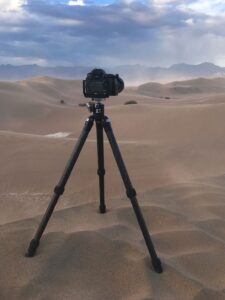Opposite Day
Aperture is an integral part of photography but can be confusing at first to work with. It is best to think of it in opposites. I’ll explain this further shortly.
Photography Life describes aperture similarly to how our eyes work: “As you move between bright and dark environments, the iris in your eyes either expands or shrinks, controlling the size of your pupil.” Aperture allows or limits the amount of light and determines exposure (see the last blog on shutter speed). The larger the aperture, the brighter the photograph; the smaller the aperture, the darker the photo.
Aperture also determines the sharpness of an image. It can blur backgrounds or increase the sharpness of the entire photo. The photography term for this is the depth of field, the distance between the closest and farthest objects. Blurred backgrounds are typically used in portrait photography. A small aperture is usually used in landscape and architectural photography to get all the details or increase the image’s sharpness.


When working with aperture, in dark environments, you use a larger aperture; in a bright environment, you use a smaller aperture. (This is where opposites come into play.) The larger the aperture, the smaller the number associated with it, and vice versa: the smaller the aperture, the larger the number.
Photography lingo for aperture is f-stop. It is shown by the letter ‘f’ and then a number, like f/8. This is what is shown on the screen of a DSLR camera. You can think of aperture as a fraction. A fraction of ⅛ is smaller than ½. An aperture of f/8 is smaller and will produce a darker image than an aperture of f/2, which is larger and will create a lighter image than the f/8 setting.
If you’re a beginner like me, most DSLR cameras have a setting called the aperture priority setting. This setting sets the aperture automatically and allows new photographers to gradually move into the manual setting.
To sum up aperture, there are two details that it affects.
- Exposure – how bright or dark a photo is
- Depth of Field – How blurred or sharp a photo is
Here’s a little cheat sheet for aperture:

The following blog will cover the final setting – ISO.